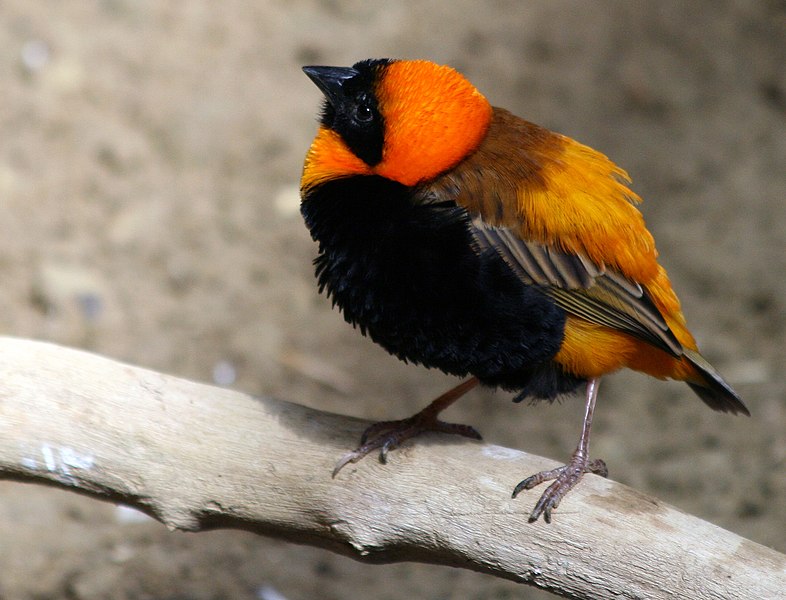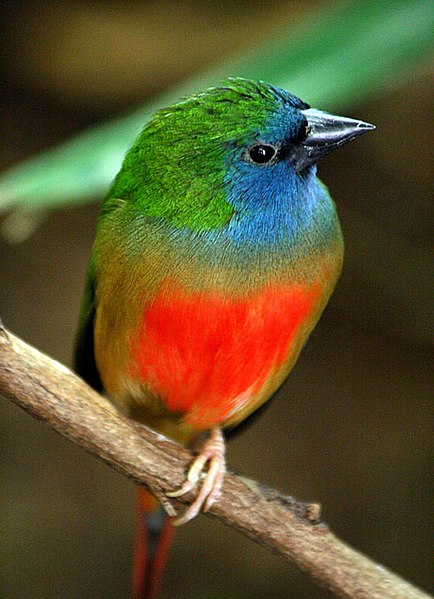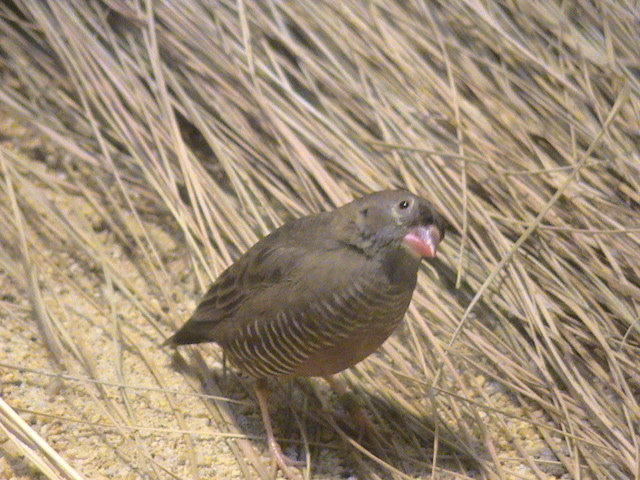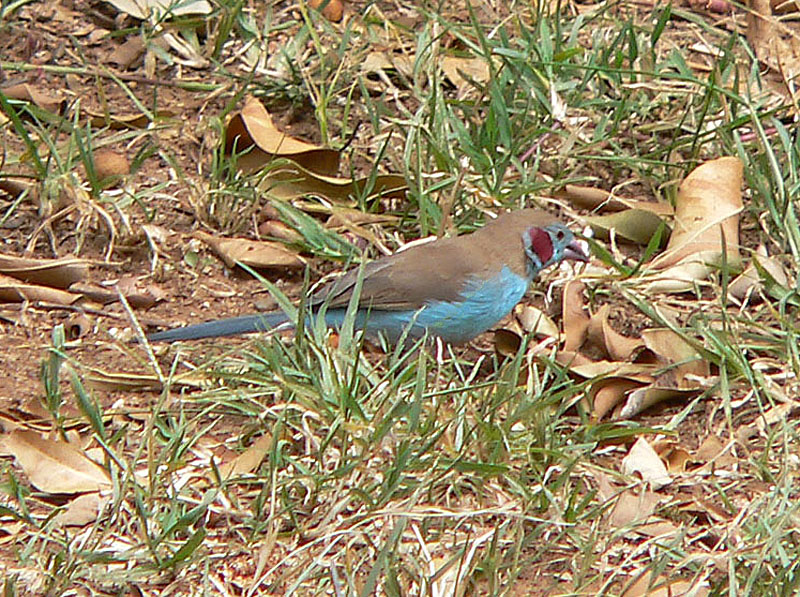 Among the Waxbills (Family Estrildidae) we find some of the most popular of all cage birds, most of which are referred to as “finches”. The related Weavers and Whydahs (Family Ploceidae), less commonly kept, are valued for their unique breeding and nest-building habits. Oddly enough, only a few species of True Finches (Fringillidae) have actually made their way into finch collections. Read More »
Among the Waxbills (Family Estrildidae) we find some of the most popular of all cage birds, most of which are referred to as “finches”. The related Weavers and Whydahs (Family Ploceidae), less commonly kept, are valued for their unique breeding and nest-building habits. Oddly enough, only a few species of True Finches (Fringillidae) have actually made their way into finch collections. Read More »
Tag Archives: finches
Feed SubscriptionMeet the Java Sparrow – Something Different for Finch Enthusiasts
 I’ve always viewed the Java Sparrow, Padda oryzivora, (a/k/a Java Rice Bird, Java Finch) as something of a “stepping stone” between the small, typical finches and the larger, less common softbills. Indeed, the moniker “sparrow” fits it well – despite being a true finch, its relatively large size (5 ½ inches), stout build and thick bill lend it a distinctly “un-finch-like” appearance. Read More »
I’ve always viewed the Java Sparrow, Padda oryzivora, (a/k/a Java Rice Bird, Java Finch) as something of a “stepping stone” between the small, typical finches and the larger, less common softbills. Indeed, the moniker “sparrow” fits it well – despite being a true finch, its relatively large size (5 ½ inches), stout build and thick bill lend it a distinctly “un-finch-like” appearance. Read More »
Finches – Sampling the Incredible Diversity of Species Available
Finch enthusiasts are in the enviable position of being able to easily obtain a wide range of interesting, colorful and unusual species. Among no other group of cage birds do we find such a variety of captive-bred specimens. Although some are quite delicate, even those relatively new to the hobby can find a great many hardy species. Today I’d like to provide a look at some of the possibilities.
Bicheno’s or Double-barred Finch, Stizoptera bichenovii
 Measuring a mere 3 inches in length, this delightful little bird is the smallest of the Australian grass-finches. It inhabits grasslands, parks and gardens; wild and captive individuals alike are quite comfortable around people.
Measuring a mere 3 inches in length, this delightful little bird is the smallest of the Australian grass-finches. It inhabits grasslands, parks and gardens; wild and captive individuals alike are quite comfortable around people.
Bicheno’s finch is clad in browns, fawn and gray, and the buff colored face is outlined with a dark, almost heart-shaped ring – bringing to mind a minute barn owl (well, actually I’m referring here to my mind, I’ve not had others second that opinion!). Despite its diminutive size, this finch is quite steady in disposition, and makes a fine, always curious pet.
These finches are much inclined to scratch about the ground for insects…providing a pile of leaf mulch will keep them occupied and yourself amused for hours.
Pin-tailed Nonpareil, Eurythrura prasina
 Clad in green, blue and bright red, this most desirable of the parrot finches occurs from Myanmar to Java.
Clad in green, blue and bright red, this most desirable of the parrot finches occurs from Myanmar to Java.
Nonpareils are bred in large numbers, but remain a species best kept by well-experienced aviculturists. They are fairly high strung and tend to crash into walls and cage bars when startled. For that reason, they are best kept in spacious, well-planted aviaries. For some reason, males greatly outnumber females, and hence true pairs are difficult to obtain.
Nonpareils require more dietary variety than many other finches, with soaked rice, insects and greens, along with a variety of seeds, being necessary for their well-being.
Green Avadavat, Amadava formosa
The beauty of this central Indian waxbill is less flamboyant than that of many other finches, but no less arresting. The grassy-green of the back blends nicely with the yellow-gray throat and grades into lemon yellow, black barred under-parts, offset by a brilliant red beak.
Green Avadavats are birds of grasslands and sugar cane fields, where they construct enclosed nests of grass and hay. Captives sometimes accept hanging, covered nests, and are generally good parents.
Although hardy once acclimated, green Avadavats are intolerant of damp conditions, and require a steady supply of small live or canned insects if they are to remain in peak condition.
Black-chinned Quail Finch, Ortygospiza atricollis
 These odd finches do indeed resemble minute quails in body form, coloration and habits. They keep to the ground, even nesting there, and, like their namesakes, explode upward in whirling flight when startled. Quail finches of one or another species inhabit much of Sub-Saharan Africa, usually in association with bogs, swamps and other damp environs.
These odd finches do indeed resemble minute quails in body form, coloration and habits. They keep to the ground, even nesting there, and, like their namesakes, explode upward in whirling flight when startled. Quail finches of one or another species inhabit much of Sub-Saharan Africa, usually in association with bogs, swamps and other damp environs.
These stout little birds do poorly in open situations in captivity, but settle down well if provided with ground cover in the form of bushes and live or dried grass clumps. Quail finches feed on the ground, and should ideally be offered live or canned insects and egg food on a daily basis, especially during the breeding season.
Further Reading
Read an interesting account of one aviculturist’s success in breeding the quail finch. I’ve written about a number of other finches as well; please see The Gouldian Finch and the articles referenced there for more information.
Double-barred Finch image referenced from wikipedia and originally posted by Glen Fergus.
Pin-tailed Parrotfinch image referenced from wikipedia and originally posted by Barracuda 1983.
African Quailfinch image referenced from wikipedia and originally posted by Magnus Manske.
The A&E Double Flight Cage: How Much Room Does a Finch Need? Part I
 It seems to me that finches are often “short-changed” when it comes to cage space. Their small size, especially when compared to other pet birds, seems to pre-dispose hobbyists to providing equally tiny living quarters. But the facts that a bird “fits” in a cage, and can move about somewhat, does not necessarily mean that we are providing it with an ideal environment.
It seems to me that finches are often “short-changed” when it comes to cage space. Their small size, especially when compared to other pet birds, seems to pre-dispose hobbyists to providing equally tiny living quarters. But the facts that a bird “fits” in a cage, and can move about somewhat, does not necessarily mean that we are providing it with an ideal environment.
Cage Size…an Alternative View
Rather than using your pet’s size as a factor in cage choice, I propose instead that you carefully consider its habits and natural history. For example, finches do not climb about as do parrots, and hence cages offer to them much less “useable space”. Whereas a parrot might clamber over every inch of its home – roof included – finches use mainly flying and ground space.
Also, finches explore and will utilize toys, but not to the extent seen in most parrots. They spend more time foraging and otherwise moving about, and hence have little to “occupy themselves” in a small cage… space therefore is key to their well-being.
 Then too, many finches tend to be high strung, and are ill at ease when closely confined. It is very hard to hand-tame finches, or to induce breeding in tight quarters. As most finches are not given outside flight time, cage size and complexity are important factors in their husbandry.
Then too, many finches tend to be high strung, and are ill at ease when closely confined. It is very hard to hand-tame finches, or to induce breeding in tight quarters. As most finches are not given outside flight time, cage size and complexity are important factors in their husbandry.
A Finch Mansion
At just over 5 feet x 2 feet x 5 feet, the A&E Double Flight Bird Cage is the ultimate in luxury housing for finches. Available in 6 colors, it can also be divided to allow for introductions or when separate facilities are otherwise needed.
The .5 inch bar spacing renders this cage ideal for even the smallest of finches, but its design also permits the accommodation of cockatiels, parrotlets, lovebirds and parakeets.
Large Finches and Mixed Species Groups
The Double Flight Cage is an excellent choice for those seeking to provide finches of any kind with additional room, and is perfect for housing larger species such as Gouldian finches, bull finches and Java rice birds.
You can also use this cage to create a striking mixed-species display for compatible birds such as cordon bleus, golden-breasts and painted finches.
Nesting and Breeding
Additional space always improves ones chances of breeding captive birds. Ample room is particularly important for shy finches, and for those that become lethargic in small cages and reproduce most reliably in group situations (i.e. yellow-rumped and gray-headed munias).
For many of the more sensitive finches, a large flight cage is the only reasonable alternative to an outdoor aviary if breeding efforts are to be successful.
The Double Flight Cage is equipped with 2 doors that allow for the installation of nest boxes. Nesting sites so situated are outside of the cage and therefore will not restrict available flight space.
My most memorable observations of captive finches have taken place before large cages and outdoor aviaries. If you are serious about your birds, please consider providing them with as much space as possible.
Further Reading
Working with mixed species collections is a favorite pastime of mine, and one that hooks most who give it a try. Click here for more information concerning finch species that forage together in the wild.
Image referenced from wikipedia and originally posted by Jason L. Buberel.
Introducing the Red-Cheeked Cordon Blue (Uraeginthus bengalus)
These beautiful little finches are among the most popular of the exotic seedeaters, both here and abroad. I highly recommend them to those who have a bit of finch-keeping experience and are looking to expand collections.
Natural History
 Native to sub-Saharan Africa, cordon blues range from Senegal to Ethiopia, and south through eastern Africa to Zambia. They are usually associated with grassland habitats, but frequent farms and villages as well. They are members of the family Estrildidae, the waxbills.
Native to sub-Saharan Africa, cordon blues range from Senegal to Ethiopia, and south through eastern Africa to Zambia. They are usually associated with grassland habitats, but frequent farms and villages as well. They are members of the family Estrildidae, the waxbills.
Cordon blues top out at 4 ½ inches in length, and are clad in fawn brown and sky blue. The beak is red, with a black tip, and males have crimson cheek patches.
Warmth and Large Cages Required
Despite their small size, cordon blues need alot of space if they are to thrive, so provide them with one of our larger finch cages. Hailing from warm, dry climates, they are a bit more sensitive than most finches to cool, damp conditions, and do best at temperatures of 77 F or so.
Insects and Other Dietary Needs
Another thing to bear in mind is their need for a diet rich in insects – they will not do well on a seed-only diet. Small crickets, mealworms, waxworms and wild caught insects (consider using a ZooMed Bug Napper Insect Trap) are all relished. Small canned insects, such as Exo Terra silkworms, and ZooMed Anole Food (dried insects) are also worth trying. A quality finch seed should form the bulk of the diet, and sprouting grass and small amounts of carrot, broccoli and spinach should be provided 2-3 times weekly. Gravel, cuttlebone and a bath should always be available.
Breeding in Nature and Captivity
Cordon Blues will breed readily if provided with a roomy cage, and both sexes sing melodiously. An oven-shaped nest is constructed, and up to 5 eggs may be laid. Both sexes incubate the eggs for approximately 13 days, and the young fledge 17 days after hatching.
Interestingly, wild cordon blues often nest in trees occupied by wasp colonies. I’ll write more about this in the future, but it seems that finches nesting in such trees are twice as likely to be successful in fledging chicks as are birds nesting in trees without wasp colonies – probably because the wasps chase off egg and chick predators.
A number of other waxbills are popular in the pet trade…please write in with your observations and questions. Thanks, until next time, Frank.
Image referenced from Wikipedia Commons and first posted by Christiaan Kooyman.
 That Bird Blog – Bird Care and History for Pet Birds
That Bird Blog – Bird Care and History for Pet Birds
